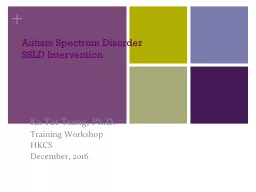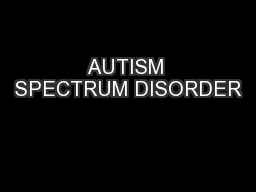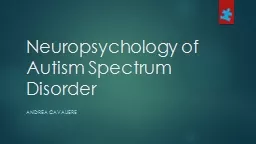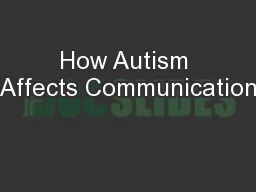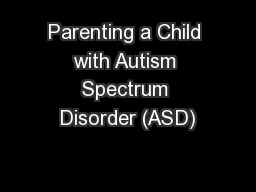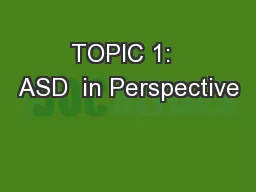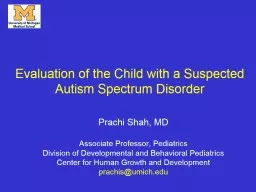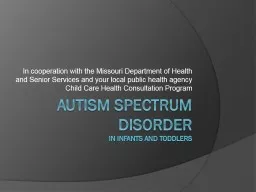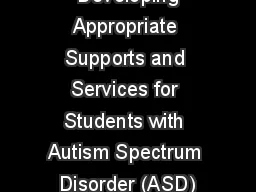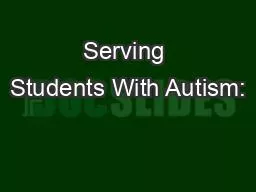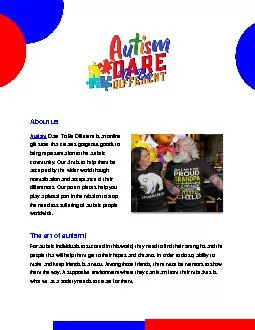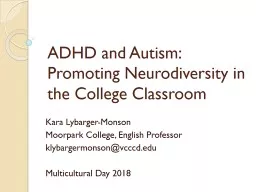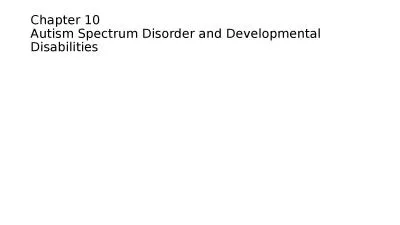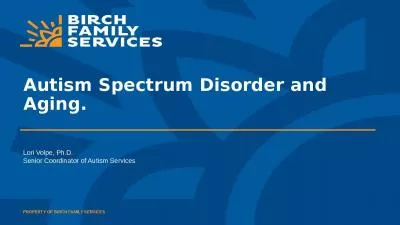PPT-ASD (Autism Spectrum Disorder)
Author : gristlydell | Published Date : 2020-06-23
SSLD Intervention Ka Tat Tsang 2017 Autistic Spectrum Disorder ASD Autism Kanner 1943 Aspergers Syndrome Asperger 1944 Impaired development of social skills
Presentation Embed Code
Download Presentation
Download Presentation The PPT/PDF document "ASD (Autism Spectrum Disorder)" is the property of its rightful owner. Permission is granted to download and print the materials on this website for personal, non-commercial use only, and to display it on your personal computer provided you do not modify the materials and that you retain all copyright notices contained in the materials. By downloading content from our website, you accept the terms of this agreement.
ASD (Autism Spectrum Disorder): Transcript
Download Rules Of Document
"ASD (Autism Spectrum Disorder)"The content belongs to its owner. You may download and print it for personal use, without modification, and keep all copyright notices. By downloading, you agree to these terms.
Related Documents

